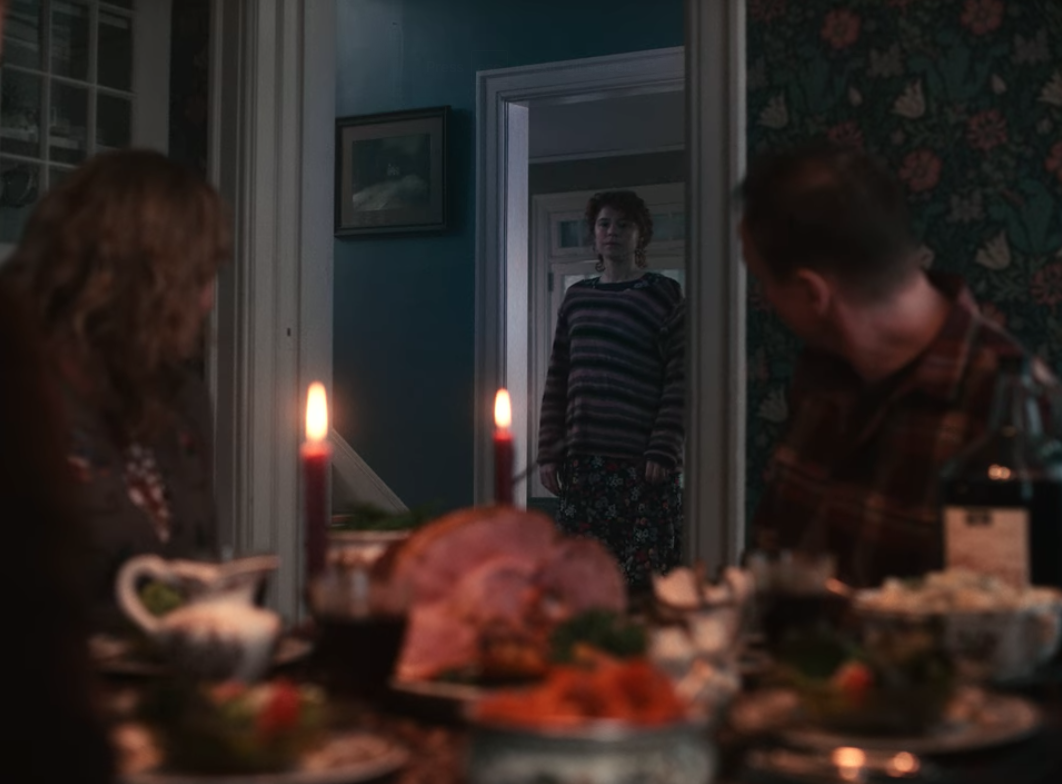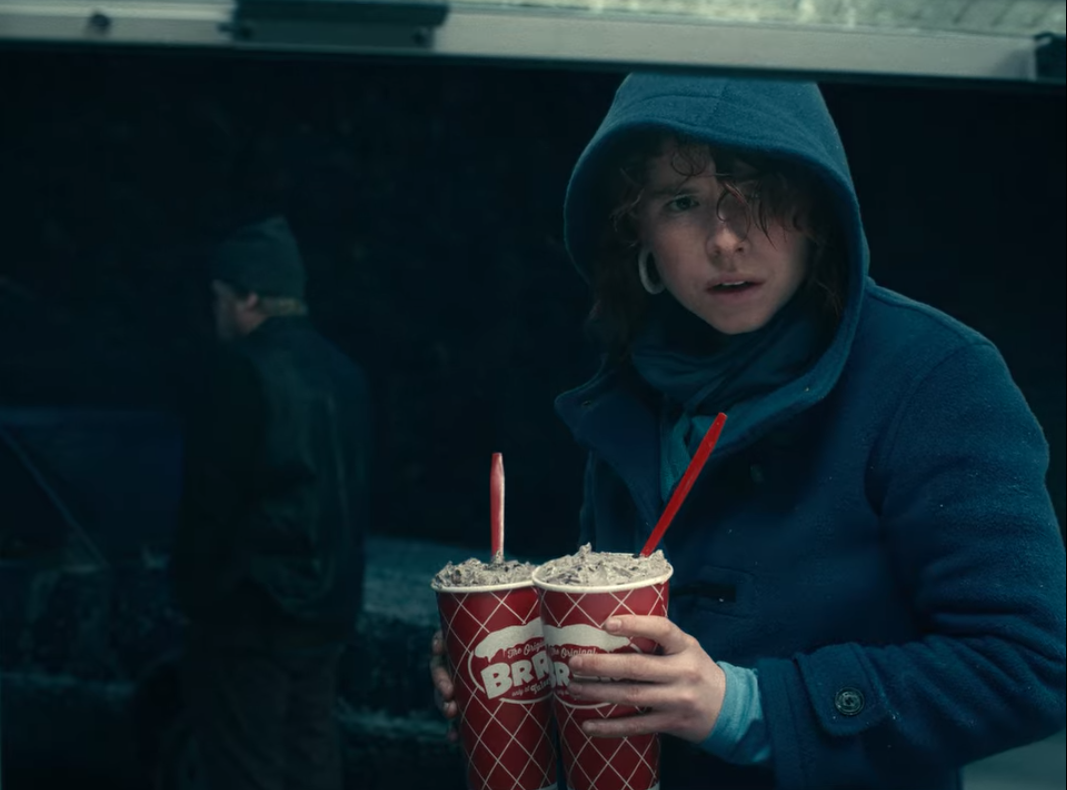Misery loves company, you say? If that’s the case, then Netflix’s newest I’m Thinking of Ending Things is a defiance from the norm. Avoiding the horror/thriller label, the Charlie Kaufman-led feature is an isolationist’s noir dream. The film brandishes a fairly unorthodox cinematic experience for itself — mixed within it contours of solitude, unfamiliarity and surprising musical theater references.
Based on the novel of the same name written by Iain Reid, I’m Thinking of Ending Things strikes as a film that has a lot to say, but lets the audience decipher the message for themselves. Being one of those audience members, I agree with the notion. Kaufman — of the Oscar-winning Eternal Sunshine of the Spotless Mind — is well-known for crafting mind-bending, dialogue-heavy, contemplative work, which is why his partnership with Reid works.
Both have stated that they find comfort in allowing ambiguity play a significant role in how audiences experience the story. “I feel like any work of art, any creative work, exists as an interaction between the person who created it and the person who’s experiencing it. […] If you spoon-feed stuff to people, then you don’t allow for that process; therefore, it’s a lesser experience”, Kaufman said in a conversation with Reid in Netflix Queue.
[Warning: Spoilers ahead for the film I’m Thinking of Ending Things.]
That being said, here’s how my experience went: I’m Thinking of Ending Things spans a single day, despite it giving off the impression of a neverending winter night. It follows a young woman who goes by the name Lucy (Jessie Buckley), as she goes on a road trip with her boyfriend Jake (Jesse Plemons). Heading to the childhood home of the latter, the couple drives through the bleak outside world, hours predating a snowstorm. In the first fifteen minutes, these are the facts that we were presented. Yet what follows closely is a striking offbeat atmosphere that serves a telling that we should not trust those previous facts at face value.
One main thing that I would make a case out of is the character inconsistencies that presents itself more and more throughout the film. An example of this can be seen as Lucy and Jake arrive at the latter’s childhood home, a farm settled in solitude among a white wasteland. In a brief moment, while meeting his parents (Toni Collette and David Thewlis), Jake introduces his girlfriend as Lucia instead of Lucy. This is not the only time in the film that she was addressed with a different name, therefore even the character herself was seen doubting reality.

Dinner with the parents. Source: Netflix
Kaufman’s female protagonist is not alone in showcasing different forms of identity. Jake’s parents present more tangible, physical transformations. As the evening progresses to the night, “Lucy” encounters archetypes of Jake’s parents, from looking aged and sometimes forgetful, to youthful and bright. We also catch a glimpse of one of them on their deathbed.
After this strange evening, Lucy (or is it Lucia? Louisa? Ames?) is eager to go home because she has to go back to work in the morning, a fact she mentions repeatedly to Jake. However, what does “work” actually mean to her? In the beginning she was hinted as being a poetry-loving academic, but then at dinner she was a painter, and on the car ride home she is a waitress.
Because of these details, the audience might end up questioning both the narrator and the environment surrounding her. Therefore, we feel like Lucy. Nothing is reliable except our own thoughts. But just when we think it might be time to try and make sense of everything, more questions unveil itselves. One being the identity and relevance of the mysterious janitor.
This middle-aged janitor is introduced to us quite frankly from the start. Multiple scenes of this figure cuts in at irregular intervals between Lucy and Jake’s night. Familiar faces are even spotted in both timelines, yet somehow those faces embodied different people. But only until halfway into the film we can see the two worlds connect and the film’s climax takes place.
On their way home, amidst the dark night and freezing storm, Jake insisted on stopping by at his old school. We find out soon that this is where the janitor works. Although Lucy had a brief yet significant encounter with him, we never see Jake and this man together.
Is Jake this janitor? Or is the janitor Jake? It is highly possible that these two characters are the same person. Specifically, Jake is likely a figment of the janitor’s self inside his mind.

Lucy and Jake caught in the storm. Source: Netflix
And what about Lucy? Is she a real person? If not, why does she exercise a fair amount of agency, most of the time more than Jake? Lucy is guessed to be a representation of an idea of a person the janitor romanticizes, all the while not fully knowing her wholly. This explains why Lucy is Lucia is Louisa is Ames is a physicist is an artist is a waitress.
And Jake’s parents? How do they fit in? Perhaps their fast-paced, sometimes-reversed metamorphoses were ways that Jake tried to fit this Lucy woman into different points of his life.
Then again, these theories are simply guesses. As I have mentioned, Kaufman and Reid did next to nothing in confirming or deny certain interpretations of this story. Therefore, I won’t weigh much else on how these subtle twists connect emotionally or cognitively. Instead, I will piggyback off of them and let your own interpretations take flight. Let the ambiguity sit with you, if you choose to.
I’m Thinking of Ending Things is full of twists and turns, but not the kinds you would expect. It requires you to be aware of them, because it won’t come in grand gestures but minute moments. You learn along the way that it’s best to keep your mind open and be vulnerable to the story, because you are a part of it.
“You can’t fake a thought.”
Featured image is a screenshot from the film’s trailer (Netflix on YouTube).











